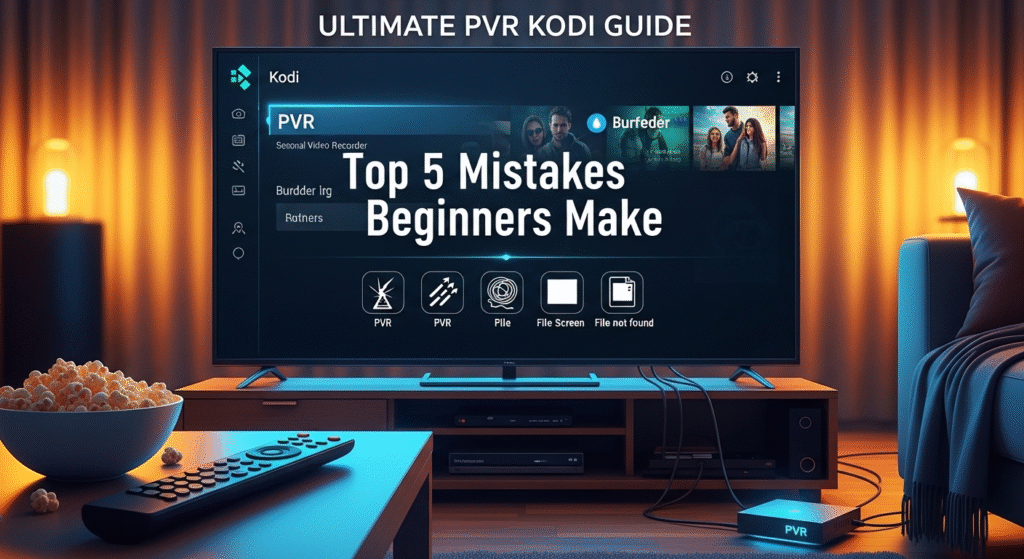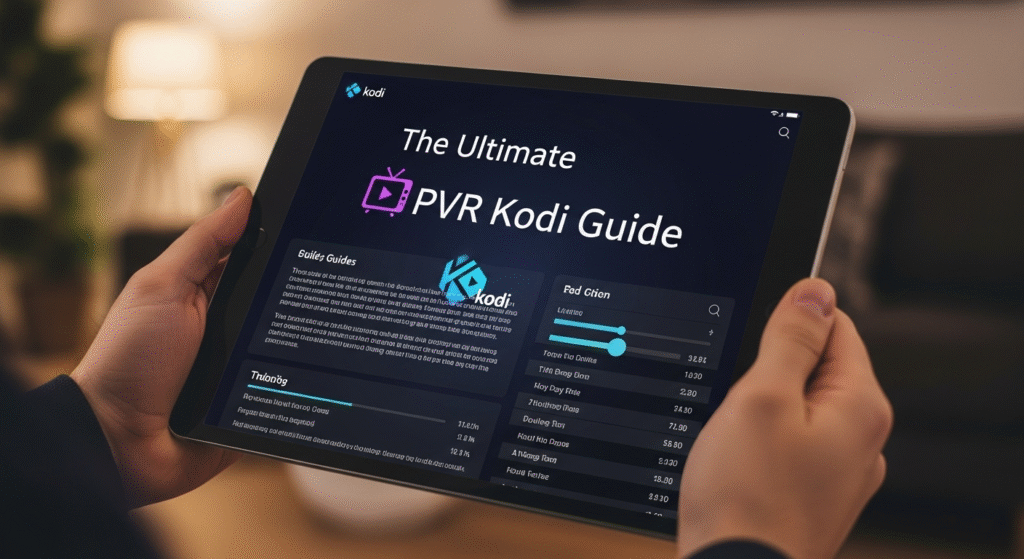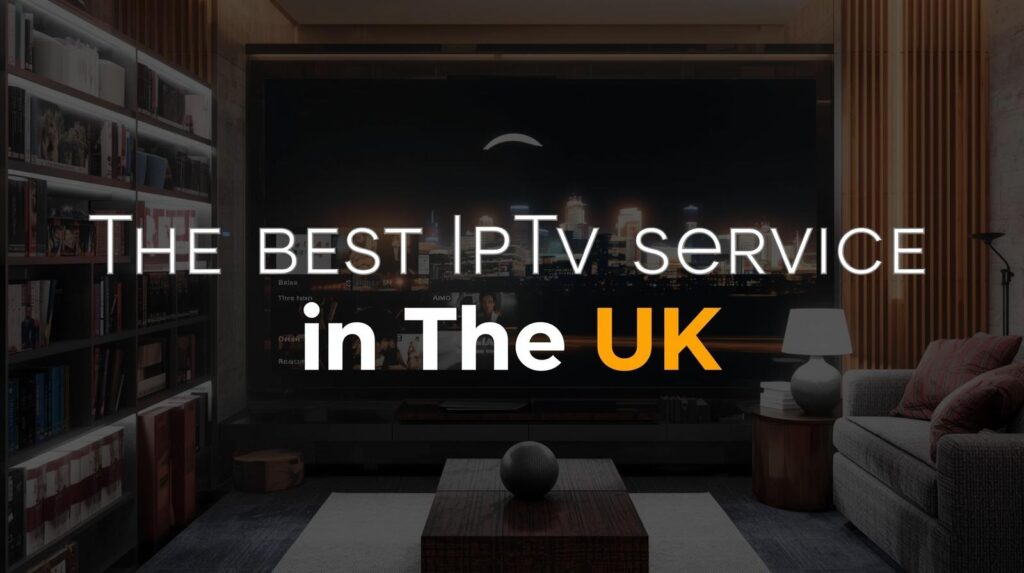
Okay, so you’re probably sick of those crazy cable bills, right? And let’s not even talk about how they lock you into watching stuff at specific times like it’s still 1995. Well, here’s the thing – PVR Kodi is basically a game-changer that’ll blow your mind. It’s like having your own personal TV station, and I’m gonna walk you through the whole setup.
Table of Contents
ToggleWhy Everyone’s Going Crazy Over PVR Kodi
Look, the way we watch TV has completely changed. PVR_Kodi is leading this whole revolution, and honestly, once you try it, you’ll wonder why you didn’t switch sooner. Instead of being stuck with whatever your cable company decides to charge you, you get total control over everything you watch.
So here’s the deal – PVR_Kodi basically takes the awesome Kodi softwre and mixes it with recording features that actually work. It’s like Netflix, Hulu, and your old DVR had a baby, and that baby is way smarter than all of them combined. Everything lives in one place – live TV, recordings, on-demand stuff – you name it.
The best part? PVR_Kodi doesn’t care where your content comes from. IPTV services, old-school antennas, whatever. It all works together seamlessly. That’s why cord-cutters and tech nerds absolutely love this thing.
How PVR Kodi Actually Works (Don’t Worry, It’s Not That Complicated)
Alright, I know “sophisticated media management system” sounds scary, but stick with me here. PVR Kodi is basically just really smart software that sits on top of regular Kodi software. You’ve got the pretty interface you click around in, and then there’s some behind-the-scenes magic that handles all the technical stuff.
Think of it this way – when you set up PVR_Kodi, you’re creating your own mini TV station. Cool, right? It connects to different content sources through these things called PVR clients (they’re just add-ons, nothing fancy). These clients talk to servers or your IPTV service subscription and boom – live channels, show info, and recording options appear on your screen.
The beauty of PVR_Kodi is you can start super simple and add more stuff as you get comfortable. Maybe you just want live streaming at first – totally fine. Later on, you can add recordings, program guides, all that jazz.
The Parts That Make PVR Kodi Awesome
The Pretty Front Part: The Kodi softwre gives you everything you see and click. It’s actually pretty intuitive once you poke around for a few minutes. Even your mom could probably figure it out (no offense, Mom).
PVR Clients: These are the connectors between Kodi softwre and your actual TV content. There’s PVR IPTV Simple Client (great name, right?), Tvheadend, NextPVR, and a bunch of others. Each one does things a bit differently.
The Backend Stuff: This is where the heavy lifting happens – processing streams, managing recordings, grabbing program info. Depending on your setup, this runs on the same device as your Kodi softwre or on a separate box.
Where Your Content Comes From: Could be IPTV service subscription, an antenna, or even a cable connection. PVR Kodi is like that friend who gets along with everyone.
Setting Everything Up (Yeah, You Can Do This)
Installing PVR Kodi takes a bit of focus, but I promise it’s not rocket science. Just follow along, and you’ll be streaming in no time.
Getting Kodi Software Installed
First things first – head to the official Kodi website and grab the version for your device. They’ve got Windows, Mac, Linux, Android, you name it. Download it, run the installer, click “Next” a few times like you’re installing literally anything else.
Fire up Kodi software and check out the main screen. You’ll see Movies, TV Shows, Music, and other sections. For PVR_Kodi stuff, we’re gonna focus on the TV section and the add-ons area.
Setting Up Your PVR Client
Go to Add-ons from the main menu, hit “Download,” then look for “PVR clients.” For most people, I’d say grab the PVR IPTV Simple Client first. It’s straightforward and doesn’t make you feel like you need a computer science degree.
After installing it, jump into the settings. This is where you’ll plug in stuff like your IPTV service subscription details, playlist URLs, and where to grab program guides. Each PVR client has its own quirks, so check the instructions for whichever one you picked.
Making It Actually Good
Once you’ve got the basics working, let’s make it awesome. Organize your channels so you’re not scrolling forever. Set up recording rules for your favorite shows – it’ll grab new episodes automatically. Make it look how you want it to look.
When everything’s configured right, the connection between Kodi softwre and your IPTV service subscription feels totally natural. Channels pop up fast, show info is accurate, and recordings just work.
Which PVR Client Should You Actually Use?
Picking the right PVR client makes a huge difference. Here’s the breakdown to help you choose:
| PVR Client | 👤 Best For | ⭐ Key Highlights |
|---|---|---|
| PVR IPTV Simple Client | IPTV newbies | Super easy setup, works on everything |
| Tvheadend | Tech wizards | Pretty tough but super powerful, does everything (Linux/Android) |
| NextPVR | Windows folks | Medium difficulty, plays nice with Windows & Android |
| MythTV | Linux fanatics | Really tough, full TV solution for Linux |
| MediaPortal | Windows power users | Medium difficulty, tons of features, looks nice (Windows only) |
Why PVR IPTV Simple Client Rocks
This one’s the king for IPTV users, hands down. Don’t let “Simple” fool you – it’s got everything you need. Channel management, program guides, catch-up TV. Setup takes like five minutes if you know your playlist URL and guide source.
Plus, it runs smooth even on cheaper hardware. If you’re just getting into IPTV service subscription, start here. You really can’t go wrong.
The Heavy-Duty Options
Tvheadend is basically the opposite of Simple Client. It’s a full-blown TV station backend that can handle multiple tuners at once, convert streams for different devices, and manage insanely complex recording schedules. Setup’s a pain, but if you nail it? It’s incredible.
NextPVR sits right in the middle. Windows users love it because it just fits in naturally, and the guide data looks really polished. Works with old-school TV tuners AND IPTV service subscription, so it’s super flexible.
Features You’re Probably Not Using (But Should Be)
PVR_Kodi is packed with stuff that most people never discover. Let’s fix that.
Get Your Program Guide Right
The EPG (that’s your TV guide) is what shows you what’s on now and what’s coming up. When it’s set up right, you get full descriptions, cast info, ratings – the works. PVR Kodi plays nice with different guide formats, but XMLTV is the most common one.
A good EPG turns PVR_Kodi from just another player into a legit TV solution. You can browse weeks ahead, set up series recordings with one click, and find new stuff based on what you like.
Recording That Actually Makes Sense
Modern PVR Kodi doesn’t just record stuff – it’s actually smart about it. Set up series recording and it’ll auto-grab every new episode. Add padding time so you never miss the start or end. Decide what’s more important when two things record at the same time.
The recording manager in Kodi softwre gives you total control. Delete old stuff to free up space, mark favorites, export recordings to watch on other devices. It’s all there.
Keep Your Channels Organized
As you add more channels (especially with big IPTV service subscription), things can get messy fast. PVR_Kodi lets you make custom groups by genre, language, whatever you want. Hide channels you never watch – nobody needs to scroll past 50 shopping channels.
You can also rename stuff, reorder everything, and add custom logos. These little touches make browsing feel way less overwhelming and more like your own personal setup.
Let’s Talk Money: PVR Kodi vs. Cable
Time for some real talk about costs. The difference between PVR_Kodi and traditional cable is kinda nuts:
| What You’re Paying For | PVR Kodi | Cable TV | What You Save Yearly |
|---|---|---|---|
| Monthly Service | $10-30 (IPTV) | $80-150 | $840-1,440 |
| Equipment Rental | $0 | $10-25/month | $120-300 |
| Installation | $0 | $50-100 | $50-100 |
| DVR Service | $0 | $10-20/month | $120-240 |
| Premium Channels | Included | $10-50/month | $120-600 |
| First Year Total | $120-360 | $1,210-2,390 | $850-2,030 |
What IPTV Service Subscriptions Actually Cost
Good IPTV service subscription usually run between $10 and $30 a month, depending on how many channels and features you want. Here at Sukhoi Store, we’ve got competitive pricing that includes thousands of channels, on-demand movies and shows, and streaming that actually works without buffering.
Compare that to cable starting at $80 monthly just for basic channels, then piling on equipment fees, DVR charges, and premium channel costs. The math isn’t even close – PVR Kodi with IPTV service subscription wins by a mile.
The Hardware Thing
You’ll need something to run PVR Kodi on, obviously. An Amazon Fire Stick handles Kodi softwre pretty well for under 50 bucks. An Android TV box works better for $60-100. Want the best experience? NVIDIA Shield runs about $200 and it’s absolutely worth it.
Here’s the thing – you only buy this stuff once. Cable companies charge you every single month to rent their boxes. Your hardware pays for itself super fast, plus you actually own it.

When Stuff Goes Wrong (And How to Fix It)
Even the best setups hiccup sometimes. Here’s how to troubleshoot the most common PVR Kodi headaches.
Channels Won’t Load
If channels aren’t loading in PVR_Kodi, first make sure your IPTV service subscription are actually active and you typed your login stuff correctly. Check your internet – streaming needs solid, consistent bandwidth. Update your PVR client to the newest version because updates usually squash bugs.
If just certain channels fail while others work fine, it’s probably your IPTV provider having issues. Give their support a shout. At Sukhoi Store, we’ve got backup servers so this rarely happens.
No Program Guide Info
Missing TV guide info usually means something’s configured wrong. Double-check that your XMLTV source URL is right and actually reachable. Some IPTV service subscription have built-in EPG data that needs specific setup in your PVR client.
Sometimes the PVR Kodi cache gets corrupted and stops updating. Clear the guide cache through Kodi softwre settings, then force it to refresh manually. Guide info should show up in a few minutes.
Recordings Keep Failing
Failed recordings are super annoying. First, check if you’ve got enough storage space – no space means no recordings. Make sure PVR Kodi actually has permission to save files where you told it to.
Time zone mismatches cause recordings to happen at the wrong time. If your Kodi softwre thinks it’s in New York but your guide thinks it’s in LA, recordings get messed up. Make sure everything’s set to the same time zone.
Advanced Tricks for When You’re Ready
Once you’ve nailed the basics, these advanced moves unlock even more power from PVR Kodi.
Streaming to Every Room
Set up PVR Kodi to work throughout your whole house. Run one beefy backend server that handles recordings and processing, then put lightweight Kodi softwre clients on devices in each room. Now you’ve got live TV and recordings everywhere.
The backend can run on a dedicated computer, a NAS, or even a Raspberry Pi if you’re not too demanding. Multiple people can watch different channels at the same time, all managed through PVR Kodi.
Make It Maintain Itself
Set up automated rules so your PVR Kodi manages itself. Create retention policies that auto-delete old recordings after a certain time. Make smart playlists that group recordings by genre, actor, or whatever criteria you want.
These automations keep your library organized without you lifting a finger. The system takes care of itself while you just enjoy watching stuff.
Access It From Anywhere
With the right setup, you can access PVR Kodi from literally anywhere. Stream live channels to your phone while you’re traveling. Schedule recordings remotely so they’re waiting when you get home.
Just be smart about security. Use a VPN or secure connection to protect your IPTV service subscription credentials and keep your data safe.
Making Everything Run Smoothly
A smooth PVR Kodi experience depends on having things optimized right. Here’s how to keep everything running great.
Hardware That Doesn’t Suck
You need decent hardware or you’ll just get frustrated. Your device has to decode video streams without stuttering or freezing. Minimum specs are a quad-core processor, 2GB of RAM, and fast storage for recordings.
Your network setup matters just as much. Wired Ethernet beats WiFi every time for reliability. If you have to use wireless, stick to 5GHz and keep devices close to your router.
Keeping The Software Kodi Happy
Keep your Kodi softwre updated so you get performance fixes and new features. Turn off add-ons you don’t use – they just eat up resources. Adjust cache settings based on your network and how much memory you have.
The video settings in Kodi software let you fine-tune how playback works. Turn on hardware acceleration if your device supports it – saves a ton of CPU power during streaming.
Choosing Good IPTV Service Subscription
Your IPTV provider choice makes a massive difference. Premium services like Sukhoi Store invest in solid infrastructure that cuts down on buffering and outages. Cheap services? They’re usually overcrowded and go down constantly.
Look for providers with multiple connection options, backup streams for popular channels, and support that actually responds. That’s what separates the pros from the amateurs in IPTV service subscription.
Staying Legal and Safe
Using PVR Kodi the right way means understanding some legal and security stuff.
Is This Even Legal?
The Kodi softwre itself? Totally legal – it’s just a media player. But the content you watch through PVR Kodi needs to come from legit sources. Make sure your IPTV service subscription are properly licensed to stream the channels they offer.
Good providers have licensing deals with content owners and operate above board. If someone’s promising thousands of channels for like $5/month, that’s probably sketchy pirated content.
Protecting Your Stuff
Keep your network secure when using PVR Kodi and IPTV service subscription. Use strong passwords that aren’t “password123.” Keep your Kodi softwre and PVR clients updated to patch security holes.
Consider using a VPN for extra privacy, especially when traveling. VPNs encrypt your connection and hide your location, adding another layer of protection.
What’s Coming Next for PVR Kodi
The PVR Kodi world keeps evolving. Here’s what’s on the horizon.
Cloud Recording Is Taking Over
Next-gen PVR Kodi systems are moving recordings to the cloud. No more worrying about local storage filling up, and you can watch from any device. Some IPTV service subscription now include cloud DVR that works perfectly with Kodi softwre.
Cloud recording also means your stuff is backed up automatically – survives device failures or upgrades.
AI That Actually Helps
AI is changing how we find stuff to watch in PVR Kodi. Smart systems analyze what you watch and suggest programs you’ll probably like. Machine learning spots trending content and surfaces relevant recommendations.
These features make PVR Kodi feel more personal, helping you discover great content without endless scrolling.
Better Picture Quality
As 4K and HDR become standard, PVR Kodi is evolving to support these formats. Modern IPTV service subscription increasingly offer premium channels in ultra-high-definition with amazing color.
Just make sure your hardware can handle it. Newer devices play 4K HDR no problem, but older stuff might struggle.
Ready to Get Started with Sukhoi Store?
Wanna try PVR Kodi with reliable IPTV service subscription? Sukhoi Store has everything you need for an awesome viewing experience.
We’ve got thousands of channels covering sports, entertainment, news, international stuff – everything. Full program guide support so you always know what’s on. Catch-up TV lets you watch shows you missed without recording them.
Our streams are optimized specifically for PVR Kodi, so playback is smooth and setup is easy. We’ve got detailed guides that walk you through connecting our service to your Kodi softwre.
Multiple connections mean you can watch on several devices at once without issues. Our backup infrastructure minimizes downtime and buffering problems.
Tech support is ready to help with any PVR Kodi setup questions. We get that this stuff can be tricky, so we’re patient and actually know what we’re talking about.
Questions You’re Probably Wondering About
What’s the actual difference between PVR Kodi and regular Kodi?
PVR Kodi adds live TV and recording to regular Kodi softwre through special add-ons called PVR clients. Regular Kodi mostly plays files you already have, but PVR Kodi turns it into a full TV solution with scheduling, guides, and recording.
Do I need fancy hardware for PVR Kodi?
Nah, most modern streaming devices work great. Android boxes, Fire Sticks, computers – all good. If you want recording, you’ll need storage space either on the device or on a network drive. Specific requirements depend on which PVR client you use and what features you want.
Will PVR Kodi work with my current IPTV service?
Pretty much all IPTV service subscription that provide M3U playlists and XMLTV guide data work with PVR Kodi. You just enter your provider’s playlist URL and guide source in your PVR client settings. Most services include instructions for Kodi softwre setup.
How much storage do recordings need?
Depends on quality and length. Standard definition uses about 1GB per hour, HD needs 3-5GB per hour. If you record stuff regularly, start with at least 500GB of storage and add more as needed.
Do I need to be a tech genius to set this up?
Not really. If you can install apps and follow instructions, you’ll be fine. Basic PVR Kodi setup is pretty straightforward. The really advanced stuff like backend servers needs more tech knowledge, but most people do great with simpler setups using clients like PVR IPTV Simple Client.
What internet speed do I actually need?
Depends on what quality you’re watching. Standard definition works with 5Mbps, HD needs 10-15Mbps, and 4K requires 25Mbps or more. If multiple people are streaming at once, add bandwidth for each person.
Can I record multiple shows at the same time?
Depends on your PVR client and backend setup. Simple IPTV setups usually handle one recording at a time, while advanced backends like Tvheadend can do multiple recordings limited only by your bandwidth and processing power.
How does PVR Kodi get channel updates from my IPTV provider?
Most PVR clients auto-refresh channel lists on a schedule you set. When your IPTV service subscriptions provider updates channels or guide data, PVR Kodi grabs the changes during the next refresh. You can also force a manual update anytime through Kodi softwre settings.
What happens if my internet cuts out during a recording?
Depends on your setup. IPTV-based recordings usually fail when internet dies since the stream source disappears. Some advanced setups have local caching that helps with brief interruptions, but not much you can do about longer outages.
Can I watch my recordings on other devices?
Yep! Recordings saved on network drives can be shared across multiple devices. Set up network shares that other Kodi softwre installs or media players can reach. This way you can watch recordings on different screens around your house without moving files around.
Have Questions? We're Here to Help with IPTV!




